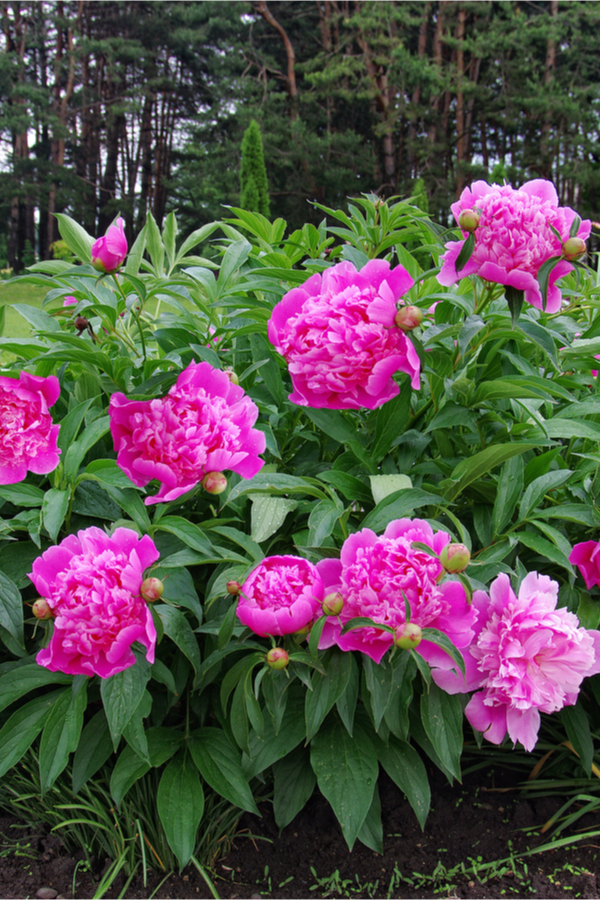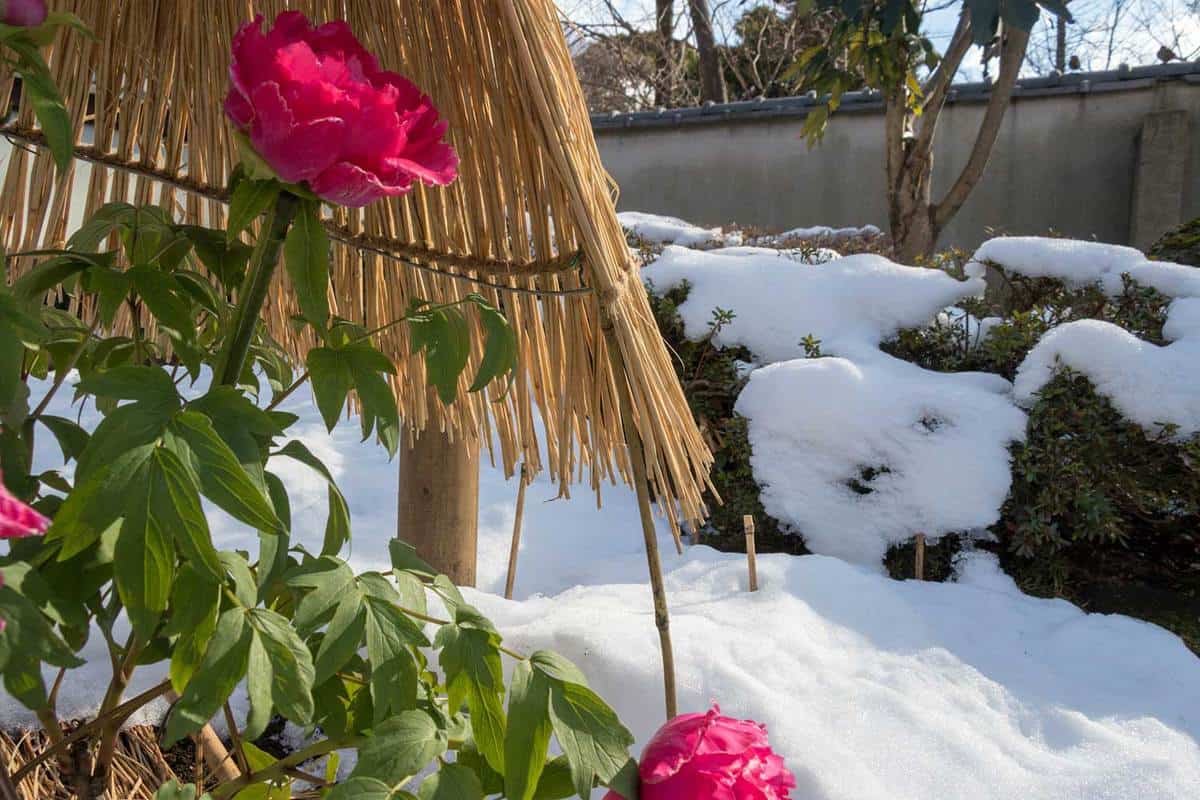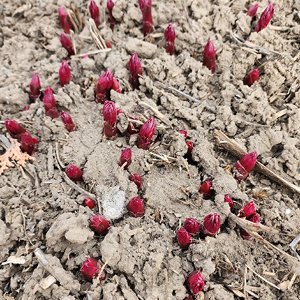Why Autumn is the Right Time for Peony Care
Fall marks a crucial period for peony care, directly influencing the vibrancy of next spring’s blooms. Proper maintenance during autumn sets the stage for healthy growth. It’s essential to understand the natural lifecycle of peonies to appreciate why fall care is so beneficial. As these plants transition into dormancy, they store energy for the next growing season. If you neglect fall maintenance, your peonies might be susceptible to diseases. Also, they may not produce as many flowers. Deciding if and how do you cut back peonies in fall involves understanding these processes. By preparing them correctly for winter, you will ensure abundant and beautiful flowers next year.
Peonies, like many perennials, benefit immensely from strategic fall care. This time of year is when the plant’s energy is redirected into the root system. Therefore, providing the correct care during this phase ensures robust development below the soil surface. This process will directly affect the plant’s overall health and vigor in the spring. Understanding the nuances of this dormant phase is key. It is the secret to achieving plentiful and healthy blooms for years to come. It’s not merely about cutting back; it’s about preparing the whole plant. So, when considering do you cut back peonies in fall, think of it as an investment in the next blooming season. The fall maintenance is as important as the spring care.
How to Prune Your Peonies in the Fall: A Step-by-Step Process
When considering how to prune your peonies in the fall, it is essential to gather the correct tools. You will need a pair of sharp, clean pruning shears. These will ensure a clean cut, minimizing damage to the plant. Begin by locating the base of each peony stem. Carefully cut back the stems to about two to four inches above ground level. The goal is to remove the majority of the foliage. This allows the plant to focus its energy on root development during the dormant season. When performing the cut, make a clean, angled cut. This helps to prevent water from sitting on the cut surface. Avoid cutting new buds that are forming at the base. These buds will produce next spring’s flowers. A gentle cut below the first node is the correct approach when you cut back peonies in fall. Always ensure your tools are clean before starting to avoid spreading diseases.
Carefully examine each stem before cutting. Look for any signs of disease or pest infestation. If you observe any, be extra cautious. Do not compost the cut foliage if disease is present. It is critical to prevent the spread of disease to other parts of your garden. Instead, bag and discard the foliage. This helps to prevent any potential issues next season. Remember, when you cut back peonies in fall, precision is key. Do not rush the process. Take your time to ensure each stem is cut correctly. Be careful to not injure the new buds that may be developing. These buds are important for spring blooms. Consistent and careful pruning contributes to the overall health of your peonies. This means more vibrant and healthy flowers next spring.
Proper pruning is crucial for maintaining healthy peonies. It is not merely about cutting back the plant. It is a method of stimulating growth. By correctly performing this process, you support the plant’s natural cycle. Understanding where to make the cuts is important. When you cut back peonies in fall, remember to always use sharp, clean tools. A dull blade may tear the stem, causing the plant stress. Cutting back the stems to just above ground level also prevents the risk of pests from overwintering on the plant. Always be mindful of the new buds. The health and beauty of next year’s blooms depend on your pruning efforts this fall. When you do the right steps, the process will give you the best outcome in spring.
The Benefits of Fall Peony Cutbacks
Cutting back peonies in the fall offers significant advantages for their health and future blooms. This practice is crucial in preventing disease and reducing the risk of overwintering pests. Removing dead or decaying foliage is essential. It promotes better airflow around the plant’s base. This improved airflow minimizes the chance of fungal diseases. These diseases can easily spread in dense, poorly ventilated conditions. When you remove the old foliage, you eliminate a potential breeding ground for pests and fungal spores that can harm the plant. Doing this directly contributes to the peony’s overall vigor. So, do you cut back peonies in fall? Yes, you do, and it’s a key practice for healthy, thriving plants. This promotes vigorous growth and helps ensure more abundant blooms in the spring.
The decaying foliage of peonies, if left untouched, can become a haven for diseases. These diseases may easily transfer to the new growth in the following season. By cutting back the old stems and disposing of the debris, you significantly lessen this risk. Also, the act of removing the dead foliage lets the peony allocate energy more efficiently. The plant can focus its resources on root development during the winter months. This is far more beneficial than sustaining decaying foliage that has no further purpose. So when thinking, do you cut back peonies in fall? Consider this essential part of their maintenance. Furthermore, this routine maintenance assists the plant’s natural cycle. It ensures it can reach its full potential for the next growing season. Proper cutback practices encourage the development of stronger, healthier buds. These buds are more likely to produce those beautiful, vibrant flowers that we all admire. So, when wondering do you cut back peonies in fall, recognize it is a vital step to guarantee health and beauty.
Timing Your Pruning: When to Cut Back Peonies
The optimal time to prune peonies is a key factor for their health. Knowing when to cut back peonies in fall is crucial for ensuring vigorous growth the next season. Typically, this occurs after the first hard frost. The plant’s foliage will naturally begin to die back at this time. This signals the peony is entering its dormant period. Do not rush the process. Allow the plant to go through this natural cycle before pruning. The best time to cut back peonies in fall is when the foliage has turned brown or yellow. This color change indicates that the plant has stored essential energy in its roots. Premature pruning can weaken the plant. Cutting back too early interferes with this energy storage process. It also leaves the plant susceptible to winter damage.
Conversely, waiting too long to cut back peonies can also be problematic. If the foliage becomes mushy or diseased, it can harbor pests and fungal spores. These can potentially infect the plant in the spring. Look for indicators that the peony is ready. The leaves should be mostly dried and easily break off. Avoid pruning during a period of warm, wet weather. This creates an environment that promotes fungal diseases. Observing your local climate helps determine the precise timing. Consider your area’s typical frost dates as a guide. Generally, waiting a week or two after the first hard frost provides the right timing. This ensures the plant is completely dormant before pruning. This careful timing is crucial to achieve healthy blooms in spring.
Knowing when to cut back peonies in fall depends on observation and timing. Be sure to watch for the signals of dormancy. Waiting until the foliage is brown and dry. The plant should have a rest period before pruning. This ensures the plant’s health and vigor. It also guarantees the best possible blooms in the following growing season. This approach optimizes conditions for the plant to thrive. Remember, patience with this natural cycle is key. Proper timing reduces risks of disease and encourages plant health. By pruning at the right time, you are giving your peonies the best care they can get. This timing is essential for a thriving garden.
What to Do With Peony Foliage After Pruning
Once you complete the task of pruning, the next step is managing the cut foliage. It’s crucial to understand that peony foliage should not be added to your compost pile. This is particularly important if your plants have shown any signs of disease. Composting diseased foliage can spread fungal spores and other pathogens. These harmful elements may then contaminate your garden. Instead of composting, you should carefully bag the pruned foliage. Use a sturdy plastic bag to contain the plant material. Seal the bag securely to prevent any accidental spread. Dispose of the bagged foliage in your regular trash collection. This will prevent disease from overwintering in your garden soil. Doing this also reduces the risk of re-infection in the following growing season. It’s a simple yet vital measure for maintaining healthy peonies.
Proper disposal of peony foliage is part of responsible gardening. The decision of what to do with peony foliage after pruning is critical to plant health. You should always aim to prevent disease and pest infestations. By avoiding composting and opting for bagging and discarding, you are helping to safeguard your garden. This proactive approach ensures healthier plants in the years to come. Many gardeners often wonder, do you cut back peonies in fall and what to do with the foliage afterwards? This practice might seem like extra work, but it makes a big difference. You are not only cleaning up your garden, but are also actively fighting potential problems. This is a simple procedure and very important to learn as part of peony care. Remember this action protects your peonies, and keeps them vigorous for future blooms. The key is to never reuse potentially diseased plant material.
Addressing Common Concerns About Peony Fall Care
A frequent question is, “Will cutting back peonies in fall harm the plant?” The answer is a resounding no. This practice is actually beneficial for the plant’s health. When you do you cut back peonies in fall, you’re helping to prevent diseases and pests. Removing the old foliage allows the plant to focus its energy on root development. This leads to stronger growth in the spring. Another common concern is how much of the stem to cut. The general recommendation is to cut the stems back to about two inches above the ground. This removes the dead foliage where pests and diseases can harbor. This might seem drastic, but it’s important for the plant’s overall health. Remember to avoid cutting into any new buds that might be forming at the base. These are essential for next year’s growth. Some peony varieties may have slight variations in their care needs. However, the general practice of cutting back stems and removing dead foliage remains consistent for most.
Another concern is the fear of damaging the plant. Rest assured, the process of cutting back peonies is not harmful when done correctly. The plant is designed to handle this type of pruning. It is a natural part of their lifecycle. It allows the plant to conserve energy for root growth. The process involves removing the old, dead foliage that is no longer useful to the plant. When you do you cut back peonies in fall, this prevents fungal diseases and pests from overwintering near the plant. These diseases and pests could affect the plant’s health the following year. There is often worry about cutting too much or too little. The key is to cut down the stems to just above the ground, leaving only a short stump. This provides sufficient protection for the plant, while removing the unnecessary foliage. Cutting back the peonies in fall is not something to be afraid of, it’s a necessary step in the care of your peonies.
It’s also important to understand that not doing this can be harmful to your peonies. Leaving the dead foliage can trap moisture. This can create an ideal environment for diseases to thrive. The plant needs to focus its energy on root development rather than trying to sustain old foliage. This is why cutting back the dead stems is so important. There may be questions about whether to leave some foliage or not. The answer is to remove all the dead stems. This prevents overwintering pests from using the dead foliage as a home during the winter. By addressing these concerns, you can confidently and effectively care for your peonies. Remember that some varieties could have specific needs. The guidelines provided are generally safe for most peonies.
Beyond Cutting Back: Additional Peony Care in Fall
While knowing when and how do you cut back peonies in fall is essential, comprehensive autumn care extends beyond just pruning. Mulching around the base of the plant provides crucial winter protection. A layer of organic mulch, such as shredded bark or compost, helps to insulate the soil. This action helps regulate soil temperature fluctuations. Mulch also aids in retaining moisture during the colder months. This is particularly important during periods of freeze-thaw cycles, which can be damaging to roots. This added protection promotes strong and healthy root growth in the upcoming spring. Consider applying a layer of 2-3 inches around the base. Avoid piling mulch directly against the stems of the peony plant.
Another aspect of fall peony care is the potential for division. If your peonies have become overcrowded, fall can be an ideal time to divide them. This process can rejuvenate older plants and produce new ones. Dig up the clump carefully, avoiding damage to the roots. Then, divide the clump into smaller sections. Each section should have healthy roots and at least 3-5 “eyes” or buds. Replant these divisions promptly in well-draining soil. Ensure they are positioned at the same depth as the original plant. Dividing peonies in fall ensures they have time to establish before winter. Mulching after dividing will also help protect the roots. These additional steps ensure your peonies are well-prepared for winter and ready to thrive next spring. Taking these actions goes beyond simply asking do you cut back peonies in fall; it is about total care.
Ensuring Healthy Peonies for Next Spring’s Blooms
Proper fall pruning and care are essential for the health of peonies. These practices also encourage abundant blooms in the spring. The steps taken now have a significant impact on next year’s display. It is vital to understand the importance of fall maintenance. Understanding why and how to do this will lead to success. Knowing when and how to cut back peonies in fall is key. This ensures your plants thrive. Neglecting these steps can result in fewer flowers. It may also lead to disease and pest problems. Therefore, dedicating time to correct fall care will pay dividends. Your peonies will thank you with vibrant, beautiful blooms. Remember, the goal is to prepare the plant for dormancy. We are not trying to stimulate new growth.
The key to success is knowing when to cut back peonies in fall. This is usually after the first frost. Cutting back at the right time ensures the plant’s resources are directed to the roots. This promotes strong root development over winter. Do you cut back peonies in fall? Yes, it’s a critical step. This process of pruning removes dead or diseased foliage. It also allows for better airflow around the plant’s base. Removal of foliage reduces the chance of fungal issues. This is essential to keep your plants healthy. The steps include cutting stems back to a few inches above ground. Ensure that you avoid cutting new buds. Mulching around the base then offers additional protection from winter temperature swings. These basic steps can mean the difference between a thriving peony plant and a struggling one.
By adhering to these guidelines, you will prepare your peonies for a successful dormant season. The practice of when do you cut back peonies in fall is a critical part of care. The effort you invest now results in healthy plants. It will also provide abundant blooms next spring. These steps will contribute to your overall gardening success. Remember, it is important to remove all pruned foliage from the area. This helps to prevent any potential diseases from spreading. Focusing on these simple yet vital tasks greatly enhances the overall health and beauty of your peony plants. Proper fall care is not complicated, but it is necessary for success. The reward for the care is a beautiful spring bloom. Understanding this process leads to confident gardening.




